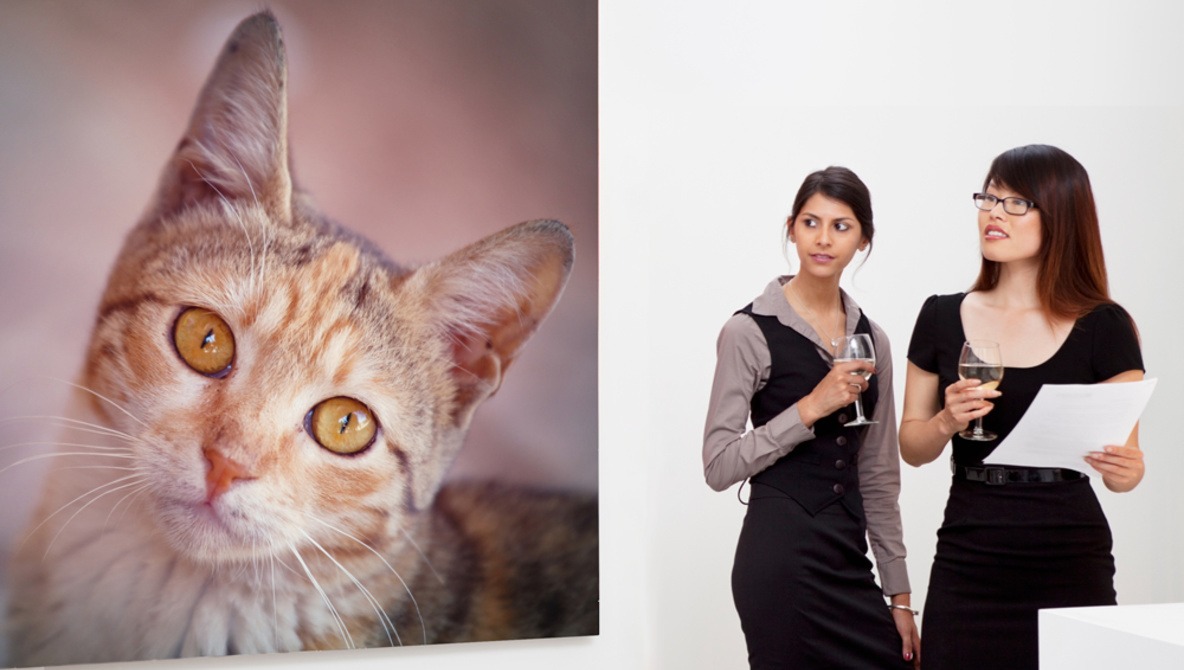The words “fine art” have got to be some of the most misused and abused in photography. For a term that is pretty much meaningless, it’s quite impressive.
The likes of Peter Lik definitely haven’t helped with this problem, and nor have countless print labs around the world. Let’s be clear: making something black and white does not make it fine art. Hand printing does not make it fine art. A naked body is not fine art. Fruit in a bowl is not fine art. And most of all: just because you want it to be fine art does not make it fine art. Artistic? Maybe. But it’s not fine art.
Print Labs Have a Lot to Answer For
In the art world, for something to have value, a buyer has to know that an art piece isn’t going to degrade in quality in the foreseeable future. For painters who use oils on canvas, this isn’t much of an issue and it’s only after a couple of centuries that deterioration starts to become a problem. Typically, the purchase of a work of art is a financial investment, in part relying on the fact that it’s not going to fade, flake away, or fall apart after a few years.
For photography, it’s a little more complex. If I suddenly fancy splashing out on an edition of Madonna by Cindy Sherman, a digital print from Costco isn’t going to make me feel too comfortable about spending $7,900 (excluding shipping). Instead, it’s sold as a gelatin silver print (edition 97 of 100) which, assuming it’s not subjected to a lot of bright sunlight, will retain its quality long after I’ve handed it to my grandchildren, and probably even after they’ve handed it to theirs.
Like most investments, acquiring pieces of art is purely speculative and buyers should be aware that prices can fall as well as increase. (It’s worth noting that Peter Lik prints will probably drop in value as soon as you buy them, however.) If it suddenly came to light that Salvador Dalí was a Holocaust-denying serial killer with a penchant for eating slow loris, collectors of paintings featuring lots of melting clocks and unfeasibly tall elephants might be a little upset.
The longevity of ink and paper is why professional labs such WHCC or Loxley Colour charge more than Costco, and it’s also the reason that labs and manufacturers often call certain types of paper “fine art” — part of why the term gets bandied around. Unfortunately, just because you print your photo of your cat onto Hahnemühle FineArt paper doesn’t automatically mean that you have created a piece of fine art. It simply means that your lovely print of Boris the irascible tabby is going to last a very long time before it fades.
So What Is Fine Art?
Endless books have been written on what makes something art so don’t expect a slightly sarcastic article on Fstoppers to give you an easy answer. One element that connects the likes of Sherman, Jeff Wall, and David LaChapelle is that not only are they producing something beautiful, but the work also examines its own processes of production, presenting us with challenges as to how we perceive both the work and the world around us. This often draws deeply on art history, an aspect that can often make artwork inaccessible to those who don’t have the luxury of art degrees and who struggle to differentiate between epistemology and ontology. (Confused? Yep, me too.)
Artist statements often don’t help. If I told you that my work results from analyzing subjects and reinventing them, prompting the viewer to reconstruct the subject and space of the work by comparing the different shapes and forms to determine what each one represents, and demanding that the viewer participates in the process of experiencing the art, you might roll your eyes. But I’ve just described Picasso, and he seemed to do alright (source).
From the outside, this art bubble can seem horribly pretentious, and there’s a degree of truth to that. However, once you dig beneath the surface and start to learn a little of art’s history, it’s a source of inspiration. The world of fine art is is both amazing and appalling at the same time, characterized by contradiction, but one that’s almost certainly worth your time.
This art culture often acts as the arbiter of taste, deciding what is good and what is not, what is of value and what is worthless. Like the speculation involved when investing in an artwork, much of what is valued is only valuable because an art culture made up of curators, buyers, and magazine editors have decided that it is valuable. If enough people say it’s fine art, it is.
Photography as an art form is beautifully problematic by virtue of its potential for mass reproduction, something that has fascinated philosophers such as Walter Benjamin. What can be exceptional about this medium is that, at times, it stubbornly refuses to conform to this pretentious art world of white walls, private views, amuse-bouches, and ludicrously inflated prices. Photography is a democratic and populist medium that has a tendency to rip itself away from the art world and make itself much more middlebrow — and unashamedly so.
To call photography middlebrow is not a slur. In the words of Dr Faye Keegan, middlebrow art is a “subversive and vital bastion of cultural democracy that radically disregards established cultural hierarchies and chooses instead to make up its own mind.” Lots of documentary and landscape photographers are regarded as fine art artists and photography is a bit slippery when it comes to creating labels and putting things into categories. If it makes us reflect on aesthetics and has the potential to connect us to something that is deeper than what the visuals alone convey, maybe it’s art. In the right context, Boris the irascible tabby can be right at home.
In short, what makes something fine art isn’t about realizing an artistic vision, nor is it about capturing what the artist sees rather than documenting a scene, nor creating a photograph simply for its aesthetic beauty. It’s not even about whether you write a fancy artist’s statement with lots of long words. Ultimately, it’s about whether other people think it is fine art, and the first step might be you calling your own work fine art. Just don’t expect everyone else to agree, and that might be a good thing.







